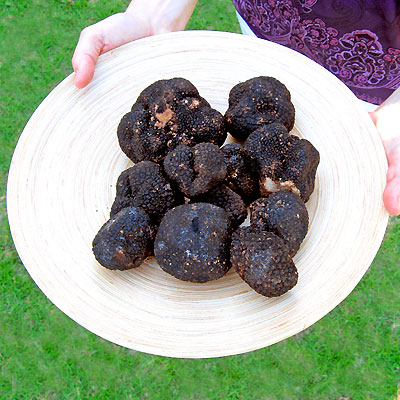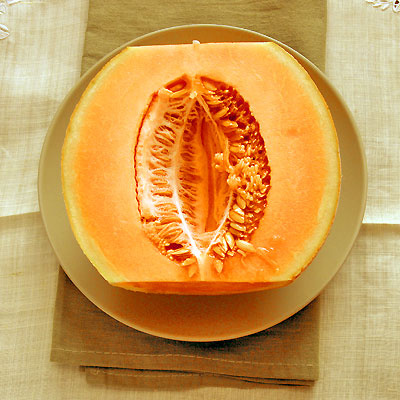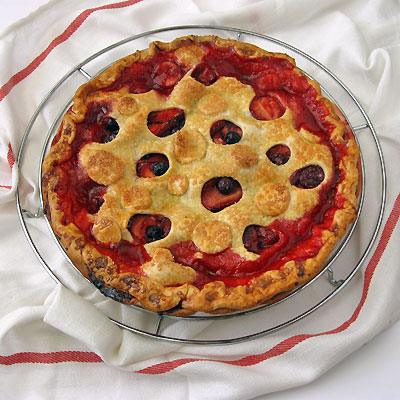
Pie. Fresh fruit and berry pie. We all aspire to that perfect triangle of sweet summer perfection. But too many of us fall flat on our goals.
Sure part of the equation is the crust. Lard? Shortening? Butter? How cold? How crumbly? How to properly roll it out? There is room for endless debate. But the pastry is a debate I leave for another day.
Because today I want to talk filling– specifically fruit filling.
But first, let me set the stage. Perfect pie is like porn; you know when you see it. You often sense it before you see it too. That’s because perfect pie starts with a fresh baked aroma. Then the pie arrives with its sugar bejeweled crust sparkling in the sunlight. Underneath that crust oozes a luscious filling, still tart enough to remind you of the fresh fruit that went into the crust in the first place.
Berry Pie
Hit those few marks and there is a good shot that you are in the presence of a great piece of the pie. It’s the simple perfection that gives it away. But it’s the complexity of taste and texture that makes it sublime.
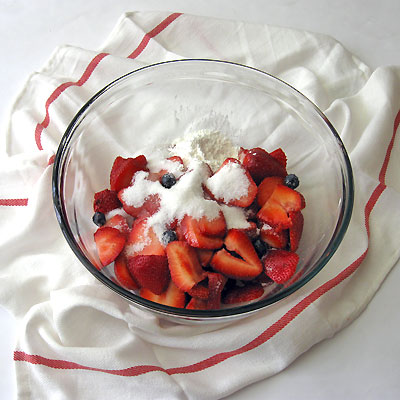 I wish I could say there was a secret to perfect pie. But in truth, there are just a few simple rules that even non-bakers like me can master. And it starts with the fruit. Almost any summer fruit can attain perfection in a pie. Just make sure that fruit is perfectly ripe because no cook in the world can reproduce that splendid ratio of perky sweetness and subtle tartness that the warm summer sunshine imparts into really good fruit.
I wish I could say there was a secret to perfect pie. But in truth, there are just a few simple rules that even non-bakers like me can master. And it starts with the fruit. Almost any summer fruit can attain perfection in a pie. Just make sure that fruit is perfectly ripe because no cook in the world can reproduce that splendid ratio of perky sweetness and subtle tartness that the warm summer sunshine imparts into really good fruit.
So today I want to talk about the fruit filling because even the best crust can’t hide inferior fruit, and a soupy, or worse gloppy filling. Un-ripened fruit is the main nemesis in a poor pie. Undeveloped fruit can be tough, it can lack the necessary pectins. The sugars may have not developed properly, so many cooks panic and add more sugar. But by then the game is lost. A complex balance will be replaced by a cloying sweetness.
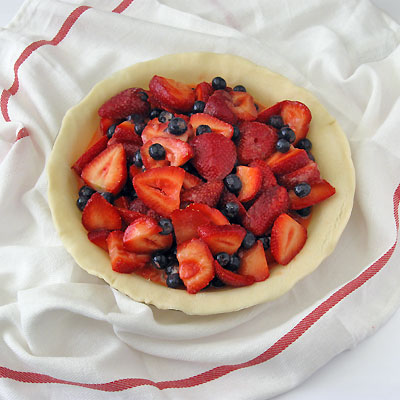 So choose your fruit well. Let it speak for itself. The best pies (pure and simple) do not disguise the fruit with too many other flavors. Follow this rule and you do not need much sugar at all.
So choose your fruit well. Let it speak for itself. The best pies (pure and simple) do not disguise the fruit with too many other flavors. Follow this rule and you do not need much sugar at all.
Once you have chosen the right combination of summer fruit for your pie it is time to turn your attention to the consistency of the filling. As the fruit cooks, it releases its moisture. If the moisture is not handled properly you can get a watery pie that will surely disappoint. A small amount of thickener is the answer to this problem. The 3 most common thickeners are flour, tapioca, and cornstarch.
Of the 3, I generally prefer cornstarch. It sets up quickly and easily. You don’t need much to do the job and it results in a cleaner, clearer looking filling. Flour tends to make the filling murky and I don’t like the coarse texture of tapioca.
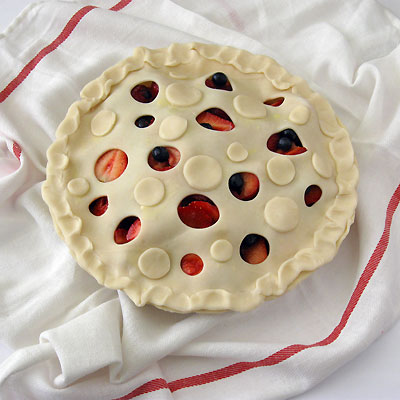 The final bit of advice I can offer to help you get a perfect slice-o-pie is to please make sure you cook it long enough. It should be noticeably (even audibly) bubbling away. It should be oozing out of the vents and even a bit over the sides. It takes at least an hour (usually more) to really properly activate the thickening agent. If the crust starts to get too brown tent it with foil, but do not be tempted to take the pie out of the oven just because it looks pretty and smells good after 45 minutes.
The final bit of advice I can offer to help you get a perfect slice-o-pie is to please make sure you cook it long enough. It should be noticeably (even audibly) bubbling away. It should be oozing out of the vents and even a bit over the sides. It takes at least an hour (usually more) to really properly activate the thickening agent. If the crust starts to get too brown tent it with foil, but do not be tempted to take the pie out of the oven just because it looks pretty and smells good after 45 minutes.
But once you do take it out of the oven. Stop. Wait. That pie is not done! There is a reason your gramma cooled her pies on the window ledge. Because cooling is a vital step and the final key to the perfect texture, both in the crust in the filling. It’s okay to enjoy that pie while still warm, but please let it cool about an hour before slicing.
Lastly, eat that pie within 24 hours and do not store it in the refrigerator even for 1 minute. Promise me that much.
Keep in mind all I have said here I think you’ll see that perfect pie can be within your summertime reach.
Summer Berry Pie serves 8 CLICK here for a printable recipe
- Perfect Pie Crust (see recipe section)
- all-purpose flour, for rolling surface
- 8 c cups mixed summer berries such raspberries, blackberries, blueberries & sliced strawberries
- 1 1⁄4 c granulated sugar
- 1⁄4 c cornstarch
- 1 pn kosher salt
- 1 egg yolk
- 1 T cream
- turbinado (raw) sugar, for sprinkling
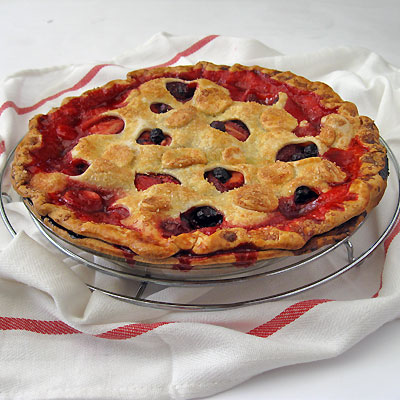 Lightly flour a pastry board, marble counter, or kitchen counter. Divide the pastry in half. Pat each piece of pastry into a flat round. Lightly flour the rolling pin. Roll pastry in one direction only, turning pastry continually to prevent it from sticking to the surface.
Lightly flour a pastry board, marble counter, or kitchen counter. Divide the pastry in half. Pat each piece of pastry into a flat round. Lightly flour the rolling pin. Roll pastry in one direction only, turning pastry continually to prevent it from sticking to the surface.
Using pie plate as a guide, measure rolled-out pastry, it should be slightly larger than the pie plate and 1/8‑inch thick. Fold rolled pastry circle in half so you can lift it more easily. Unfold, gently fitting the pastry into the pie plate, allowing pastry to hang evenly over the edge. Do not trim the pastry yet.
Stir together berries, sugar, cornstarch, lemon juice, and a pinch of salt. Fill pie shell with berry filling.
Then roll out the second crust in the same manner as for the bottom. Use a sharp, pointed knife or a small decoratively shaped cutter cut little vents in a decorative pattern. Fold the circle in half and place folded pastry on one half the pie. Unfold, pressing the top and bottom pastry together. Trim edges with scissors, leaving a 1/2‑inch overhang. Fold bottom pastry overhang over top and press firmly to seal. Crimp rim, using fingers or the tines of a fork.
Whisk together yolks and cream. Decorate tops of pies with cutouts, brushing bottoms with egg wash to help them adhere. Refrigerate the pie for 1 hour.
Preheat oven to 375 degrees. Brush tops of pies with egg wash, and sprinkle with turbinado sugar. Transfer to a parchment-lined rimmed baking sheet.
Bake until juices are bubbling and tops are golden brown, about 1 hour 20 minutes (tent with foil if crusts are getting too dark). Let cool at least 1 hour.
The cooled pie may be kept overnight, covered at room temperature. Do not refrigerate.
SERIOUS FUN FOOD
Greg Henry
Sippity Sup
Berry Pie
